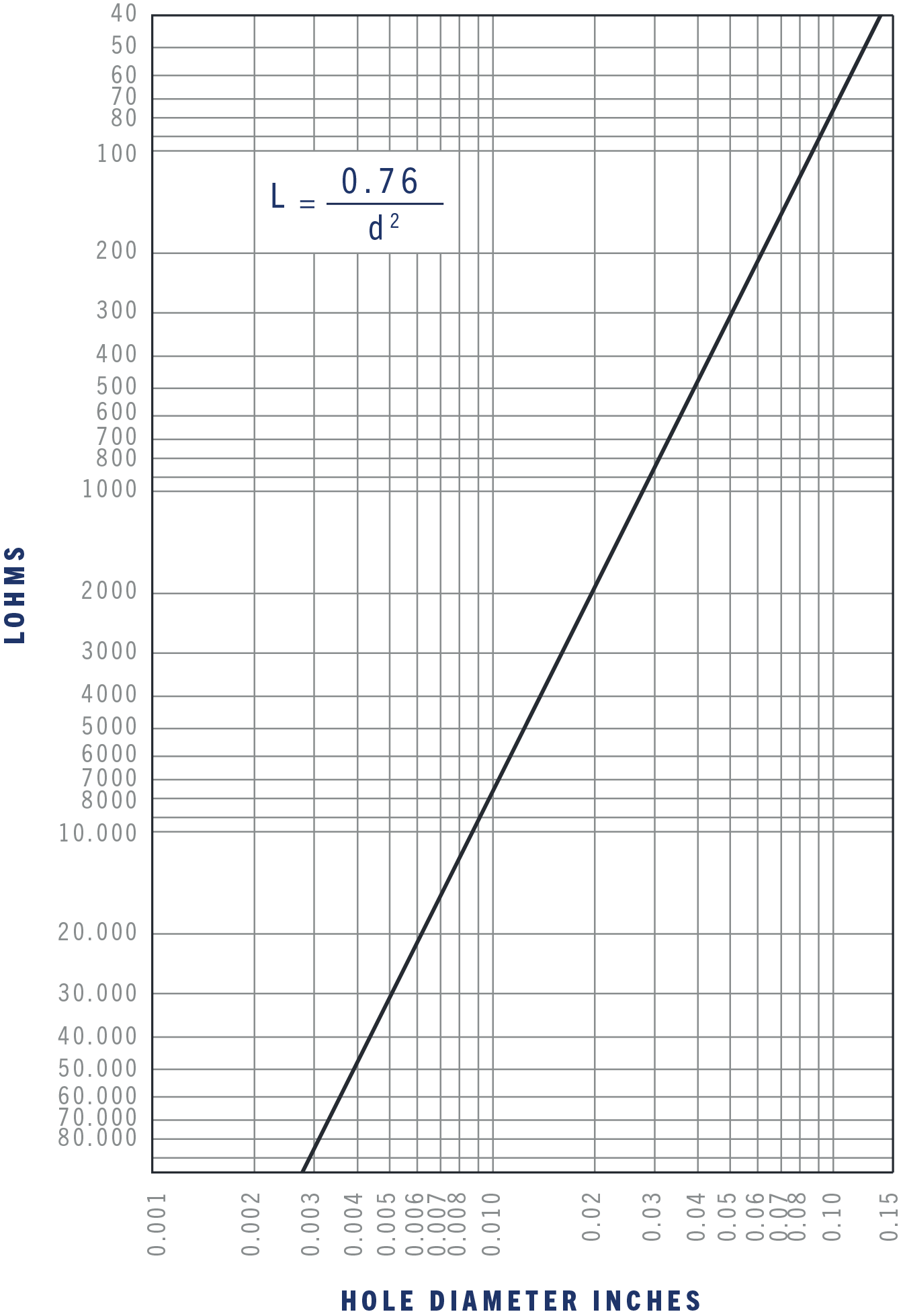
The Lohm has been selected so that a 1 Lohm restriction will permit a flow of 100 gallons per minute of water with a pressure drop of 25 psi at a temperature of 80°F.
Where:
I = Flow rate (gallons per minute)
H = Differential pressure (psi)
L = Lohm rate, a measure of resistance to liquid flow. It includes all density, viscosity, Reynolds number, coefficient of discharge, and area units (Lohms).
When testing on water at 25 psi, ∆P, √H = 5 and the above formulas simplify as follows:
and
Some useful relationships:
Example 1. What restriction will permit a flow of 1 gallon of water per hour at 50 psi ∆P?
I = 1/60 = 0.0167 GPM
Example 2. A jet with an approximate hole diameter of 0.012 of an inch flows 18 lb/hr of water at 100 psi ∆P. What is the restriction?
Example 3. What ∆P will be required to flow 20 GPH of water through a 2000 Lohm Jet?
Example 4. What water flow will result from a restriction of 500 Lohms and a ∆P of 500 psi?
The following formulas are presented to extend the use of the Lohm Laws to many different liquids, operating over a wide range of pressure conditions. These formulas introduce compensation factors for liquid density and viscosity. They apply to any liquid of known properties, with minimum restrictions on pressure levels or temperature.
The units constant “K” eliminates the need to convert pressure and flow parameters to special units.
Where:
L = Lohm rate (Lohms)
H = Differential pressure
I = Liquid flow rate: volumetric
S = Specific gravity*
V = Viscosity compensation factor** (view viscosity compensation factor)
K = Units constant – liquid (see volumetric and gravimetric flow units in tables below)
w = Liquid flow rate: gravimetric
*S = 1.0 for water at 80°F
**V = 1.0 for water at 80°F
| volumetric flow units | |||
|---|---|---|---|
| Flow Units | Pressure Units | ||
| psi | bar | kPa | |
| GPM | 20 | 76.2 | 7.62 |
| L/min | 75.7 | 288 | 28.8 |
| ml/min | 75,700 | 288,000 | 28,800 |
| in3/min | 4620 | 17,600 | 1760 |
| GRAVIMETRIC FLOW UNITS | |||
|---|---|---|---|
| Flow Units | Pressure Units | ||
| psi | bar | kPa | |
| PPH | 10,000 | 38,100 | 3810 |
| gm/min | 75,700 | 288,000 | 28,800 |
Example 5. A single-orifice restrictor is required to flow 0.15 GPM of MIL-PRF-83282 hydraulic fluid at 80°F and a 100 psi ∆P. What restriction is required?
Solution:
Example 6. What pressure drop will result from a flow of 5 PPH of SAE #10 lubricating oil at 20°F, flowing through a 1000 Lohm single-orifice restrictor?
Solution:
Example 7. A flow control is required to flow 775 lb/hr of JP4 at 80°F with a maximum pressure drop of 5 psid. What is the maximum Lohm rate allowed for the flow control?
Solution:
For special flow requirements, contact your local Lee Sales Engineer to determine the required Lohm rating.
Always verify flow calculations by experiment.
*There are many parameters to consider when determining V-Factor. Click here for more information.